
By introducing natural light, elements of Bali and a lot of love, a family made their Hong Kong flat feel like home
Having been given the freedom to renovate, the tenants of a Repulse Bay apartment went all out while retaining the flat’s period features
It started as a long-distance romance. Dutch couple Sven van der Veen and Krista van Steekelenburg first laid eyes on their beloved 2,500 sq ft, ground-floor apartment in Repulse Bay from the window of a flat they were viewing high up in a nearby tower block.
“That flat was OK, but then we looked out of the window and saw this place, and said ‘that’s what we would like’,” van Steekelenburg recalls. A week later, when van der Veen spotted it in a property agent’s listings, it felt like fate.
That was 10 years, two children and a renovation ago: by the time this is published, the family of five will have moved to the Netherlands.
“Our landlady has been amazing – she cried when we told her we were leaving,” van Steekelenburg says. “Her father was the architect who designed the flat [one of six in a three-storey, post-war block], and she wanted someone who would love it.”
How Singapore heritage home helped a family survive lockdown
Nevertheless, the flat was looking pretty unloved when the couple first rented it.
“The grass was a metre high, there was mould everywhere and it was dark with tiny windows,” van Steekelenburg says. “But the landlady gave us lots of freedom and was happy for us to renovate.”
As it was a rental and they wanted to preserve the period features that attracted them in the first place – a stone fireplace, parquet floors – they needed to be savvy. Deciding they could live with the two bathrooms and kitchen (other than respraying the cabinet doors glossy white), they focused the renovation on the living area.
To make the space larger and brighter, they knocked out the wall to the fourth bedroom, creating a play area for their young son – and later, his two brothers. They also opened up access to the garden, installing floor-to-ceiling sliding doors in the dining space.
“That was the best decision ever,” van Steekelenburg says. “We are always out in the garden.”
But it’s the eclectic furnishings that really make this home unique. They both clearly have a good eye. After 15 years in fashion, van Steekelenburg made the leap to becoming an interior designer a couple of years ago. Van der Veen also has a design background, producing a range of children’s sleep-training products for his company, Zazu. Their possessions have been collected over years, on trips to Europe and Asia, especially Bali, where they have developed several properties.
Inside hotel designer Bill Bensley’s exotic Bangkok home
There are plenty of fun, quirky elements: a pair of buxom copper yoga ladies on wooden plinths; lamps made from Indonesian krupuk (prawn cracker) tins; a Belgian tailor’s form; and in the garden, a giant champagne bottle left over from their Hong Kong wedding.
Dominating the play area is an ornate Balinese daybed – a wedding present and “where we read the newspaper on Sundays” – paired with a children’s desk created by van Steekelenburg from a pair of brightly painted drawers and a plank of distressed wood.
She also designed the furniture in the bedroom shared by her two oldest sons, 11-year-old Stein and eight-year-old Koen (Teun, aged four, has his own room, but “usually sleeps in here, too”). Van Steekelenburg painted the tree mural from a drawing projected on the bedroom wall, made leaves out of fabric and paper, and topped it all off with a green-painted Hong Kong metal postbox. She also made the birdcage lamps herself.
It’s been the perfect pandemic garden. It has so many nooks and crannies for the boys to play in. We’re really going to miss this place
Perhaps the room’s greatest asset is the door to a secret courtyard, decked out in child-sized furniture. “We put a paddling pool and a shade canopy up when it’s really hot,” van Steekelenburg says.
Through a small gap at the corner of the courtyard is the main garden, overlooking Repulse Bay, with a lawn for a kick-about and interesting spaces to fire the imagination, such as a stepladder giving access to the roof of a low concrete shed. A salvaged Lunar New Year cherry tree has put down roots in the centre of the garden (“I couldn’t believe it when it started to grow”).
“It’s been the perfect pandemic garden. It has so many nooks and crannies for the boys to play in,” van Steekelenburg says. “We’re really going to miss this place.”
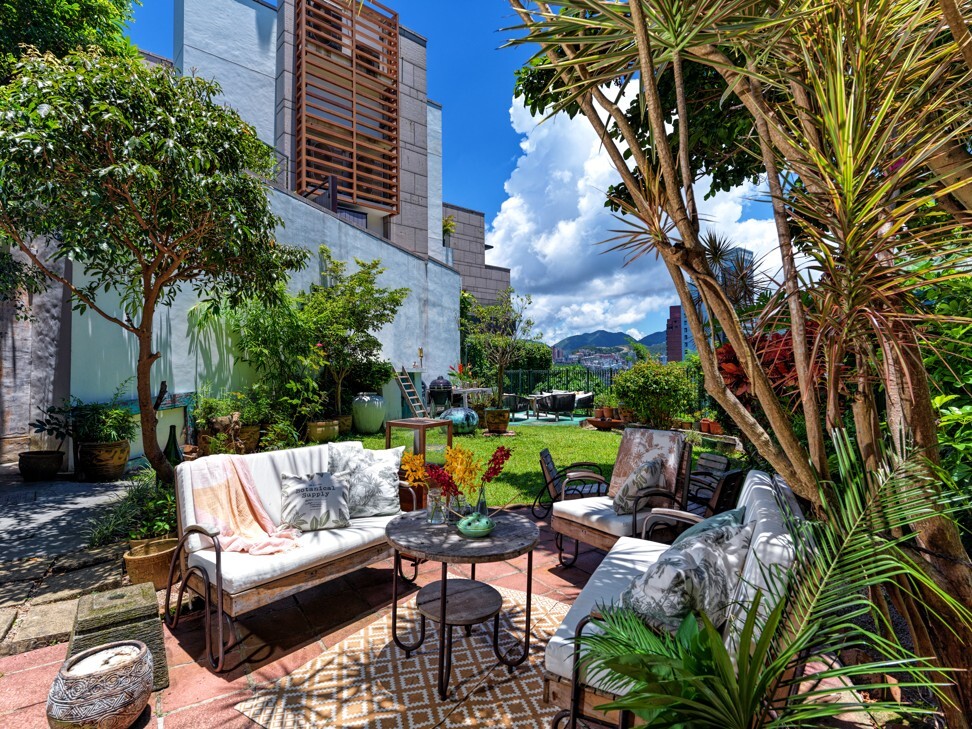

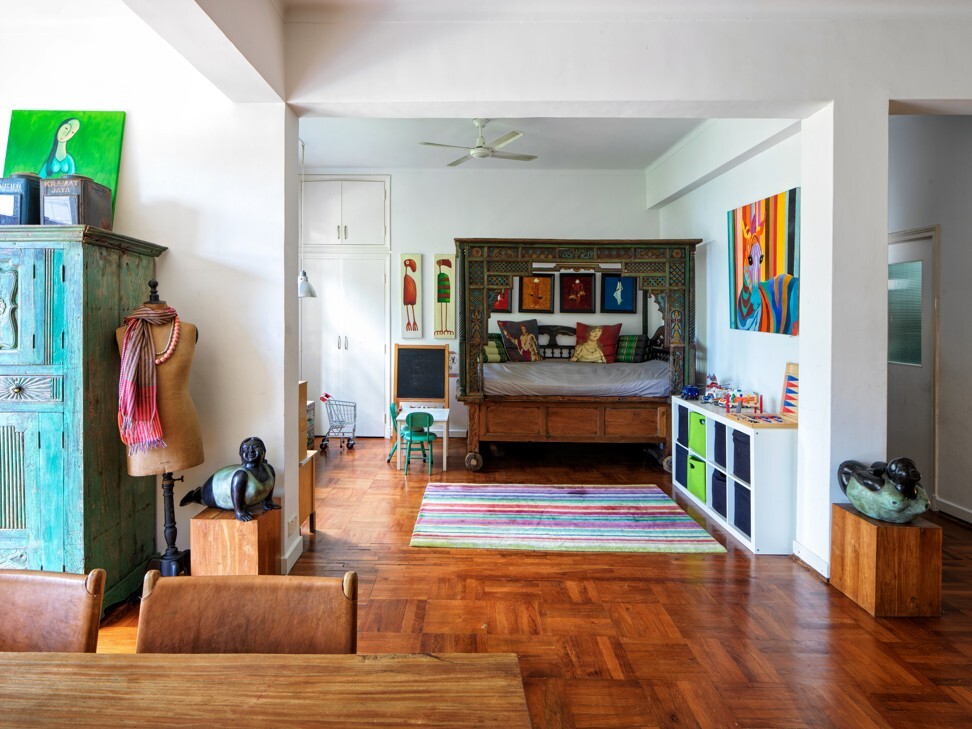
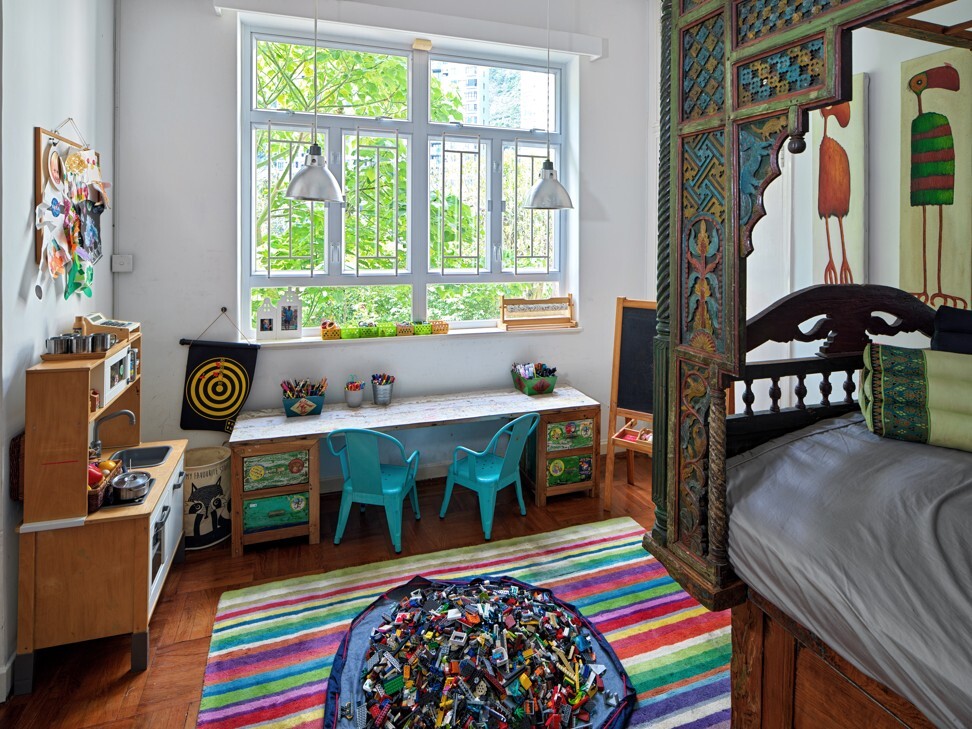


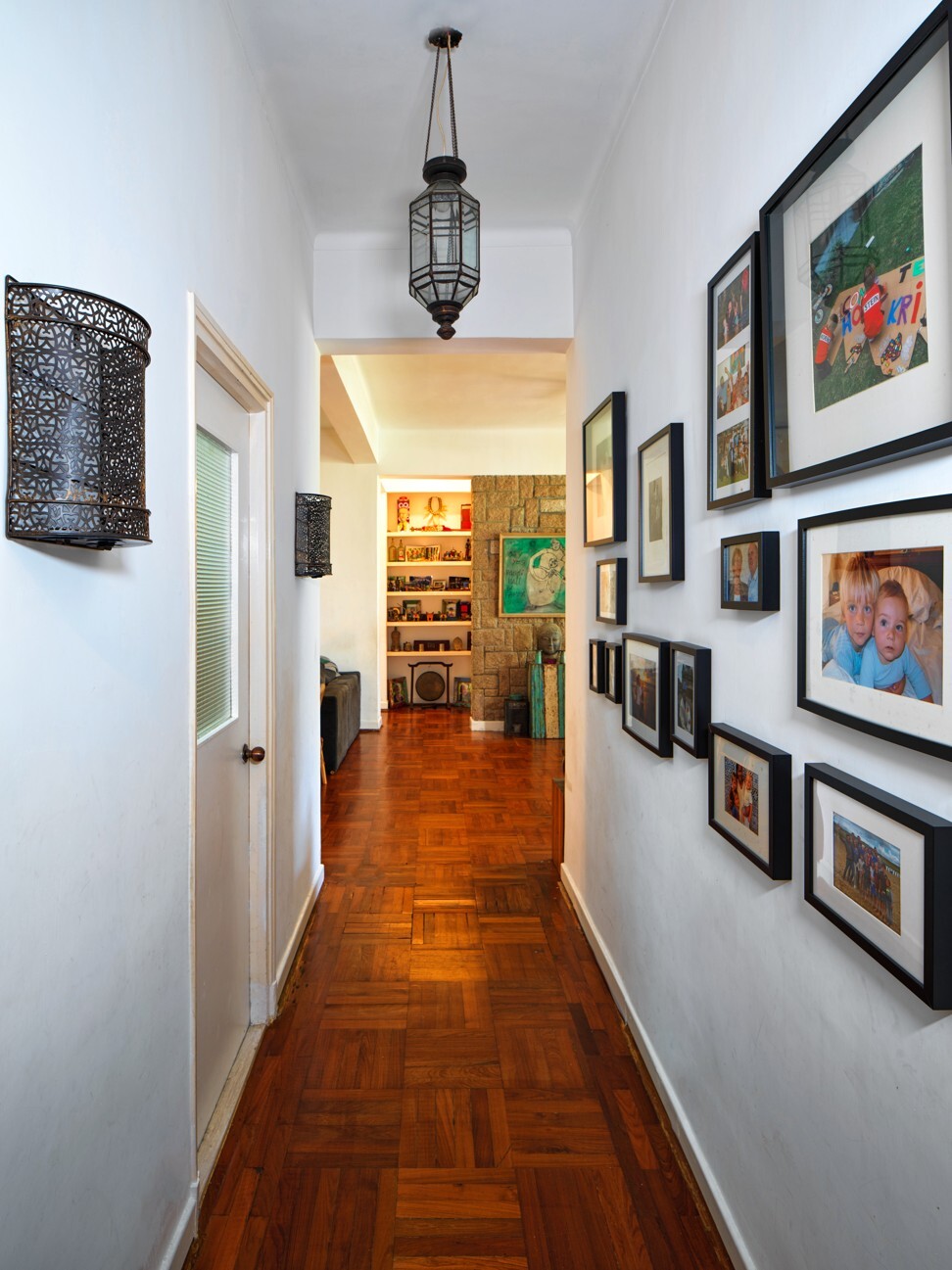
Corridor The pendant lamp came from a market in Oman and the wall lamps were from Dubai. The family photos on the gallery wall are in Ikea frames.
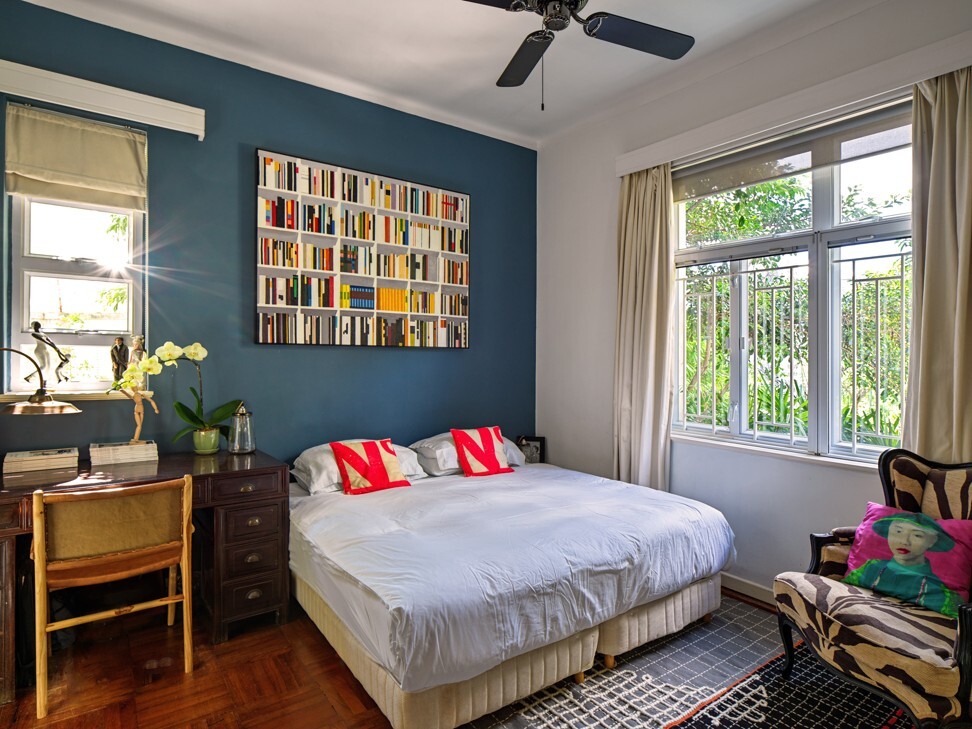
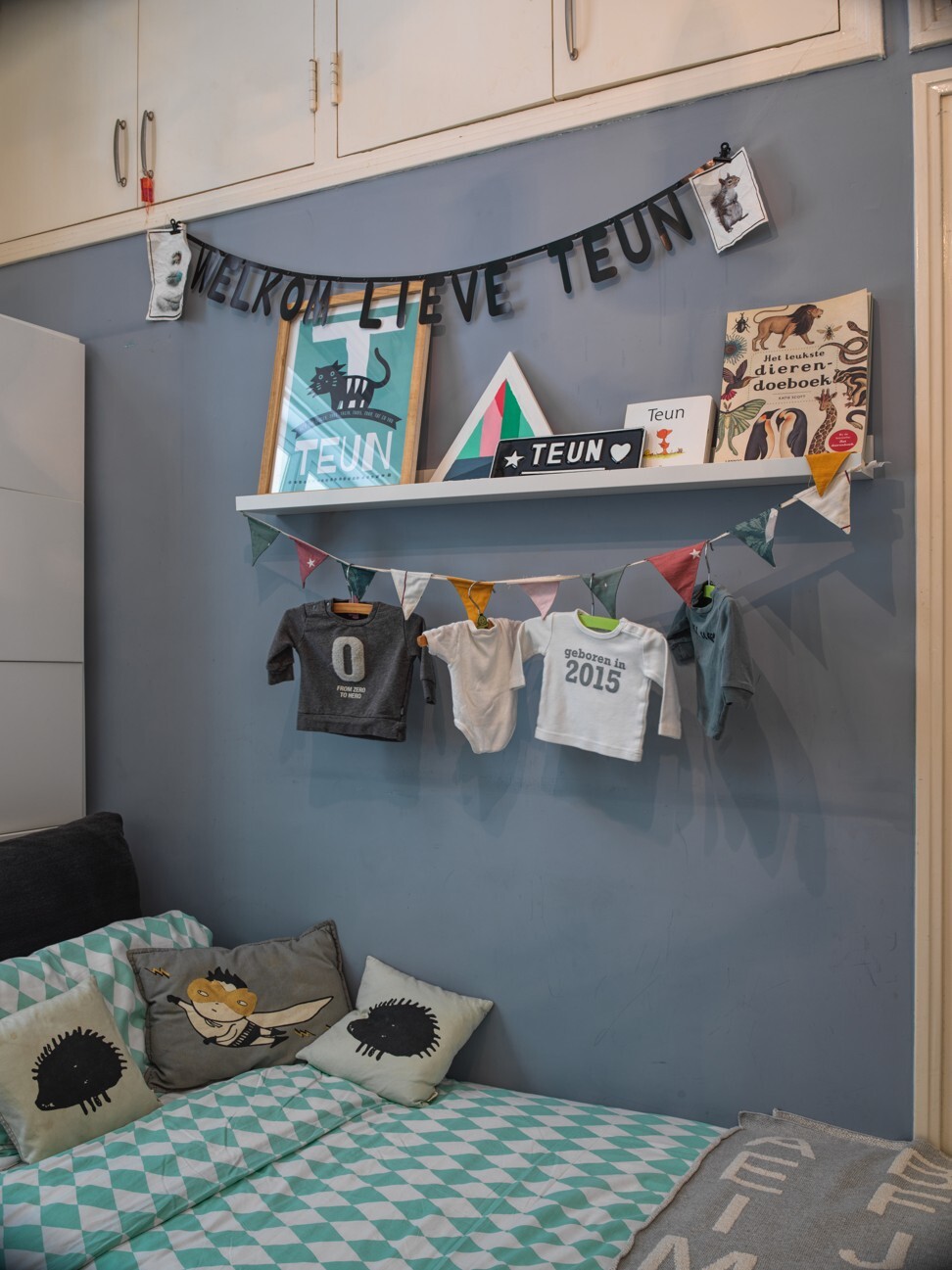

Tried + tested

Small world Outside the older boys’ bedroom is a courtyard decked out just for them. A display of old wooden shutters from Bali adds interest to the walls while child-sized furniture, an all-weather rug and orchids in small vases – echoing a similar display in the dining room – heighten the sense of a cosy outdoor space.
The iron daybed was sourced on a trip to the antique dealer paradise of L’Isle-sur-la-Sorgue, in southeast France, and the teak side table (left) was from Bali. The Anne sofas were from Piet Boon and the rug was from H&M Home.

